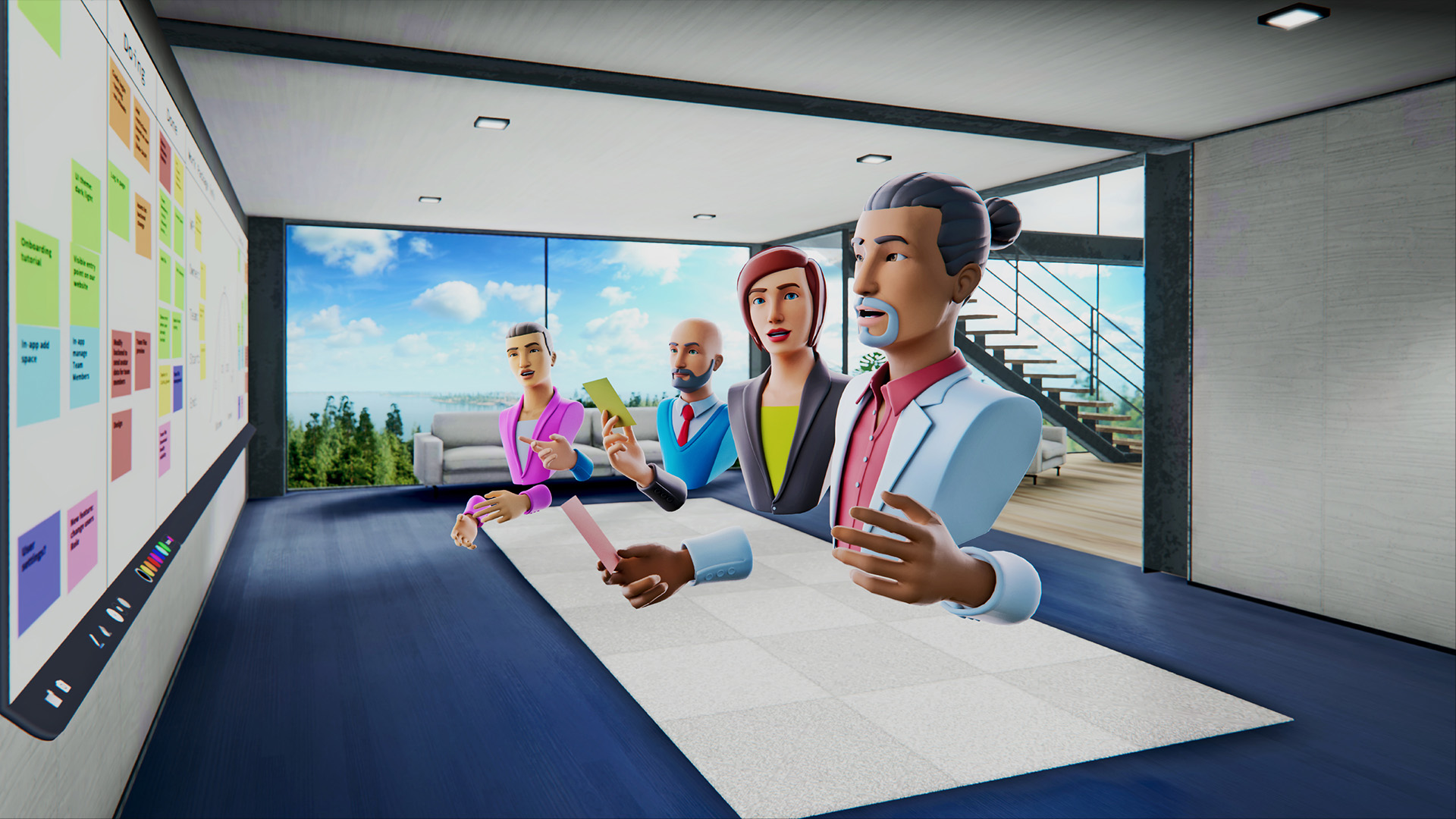Between video calls, email and tools like Slack, remote workers have plenty of ways to communicate with colleagues. Yet the 2D online tools we use every day can often be a poor substitute for face-to-face meetings, especially when close collaboration is the order of the day.
Virtual collaboration in virtual reality workspaces like Glue can fill the gap, enabling dispersed teams to co-create, learn, plan and share as effectively as they would if they were in the same room.
But just when is it best to come together in Glue rather than a video call?
In the last two years, there have been over 1000+ companies that have tested Glue. Based on our engagements, we’ve compiled a list of the top five scenarios where Glue has been most impactful for teams.
1. Meetings where communication must be frictionless
We’ve all been in face-to-face meetings where ideas flow naturally and a great plan comes together. However, achieving the same kind of ideation magic in video calls is hard.
Media psychologists like Jeremy Bailenson have noted how they can leave us fatigued due to excessive amounts of close-up eye gaze, the ‘cognitive load’ required to interpret nonverbal cues, and our lack of mobility.
And as people lose focus, many drift into other tasks: a Microsoft study published in May found that 30% of people are emailing during video calls.
Virtual collaboration overcomes these barriers by providing a focused setting for discussion that mimics the dynamics of real-world interactions. You move around and communicate in a virtual space as you might in a traditional face-to-face meeting.
3D spatialized audio creates the sensation that you are having a discussion with other people in a real space. And because you’re represented by an avatar, you no longer have the pressure of being in front of the camera.
Now there’s nothing standing in the way of you and finding that creative spark. We love how these tools take on a special quality when used in immersive 3D space. Rather than hunch over a laptop, you can now power through your usual workflows with the sensation of having your colleagues right by your side – just like in a real physical office.
2. Global project work
Not all great collaboration needs to be live. Remote workers, especially those spread across time zones, need to work effectively together asynchronously too.
In fact, many people enjoy being able to work in this way and organizations like GitHub are vocal advocates of the approach.
While asynchronous collaboration methods like email and messaging boards are 2D and limited to varying degrees, Glue empowers teams to collaborate in a fundamentally new way by enabling them to drop into shared virtual spaces whenever it suits them.
Meanwhile, content such as plans, drawings and sticky notes are persisted in their place, making it easier for teams to progress projects around the clock. We covered this feature of virtual collaboration in more detail here.
3. Training and education
VR’s ability to let you interact with your environment is useful in training simulations and classroom-based learning too. Duodecim, the Finnish Medical Society, has demonstrated the utility of virtual collaboration in the healthcare space, developing virtual training exercises in Glue that enable participants to practice their skills in patient care.
Virtual collaboration can also be useful in training workers on potentially dangerous production processes. At the same time, because the software and hardware requirements are modest, exercises can be easily scaled for large numbers of workers at a lower cost than real-world training.
4. Customer engagement with product showcases
Many of our users like to work in customized virtual spaces where they can visualize and explore complex assets in three dimensions.
Take Maillefer , for example. The company has created a set of interactive virtual production lines where its executives and customers can come together to discuss and explore its latest technology concepts.
5. Social and informal events
Does work always have to be so serious?
It can be fun to reconnect in an immersive virtual meeting environment. For example, teams at BPI, a leading learning consulting company, have been having creative workshops, informal get-togethers and even enjoying a game of VR charades inside Glue.
A space like Mont Matiz, a relaxing hill-top setting overlooking the sea, is ideal for when you want to enjoy some lighter moments with the team.
In summary, virtual collaboration is ideal for various different types of remote meetings. You won’t need it for everything. Often a quick call or video meeting will suffice.
Sometimes a meeting should only be an email. But when you want to take your collaboration to the next level, virtual collaboration may be just the ticket.
Ready to explore the possibilities of VR for virtual collaboration?
Book a demo to explore VR opportunities for your business.



